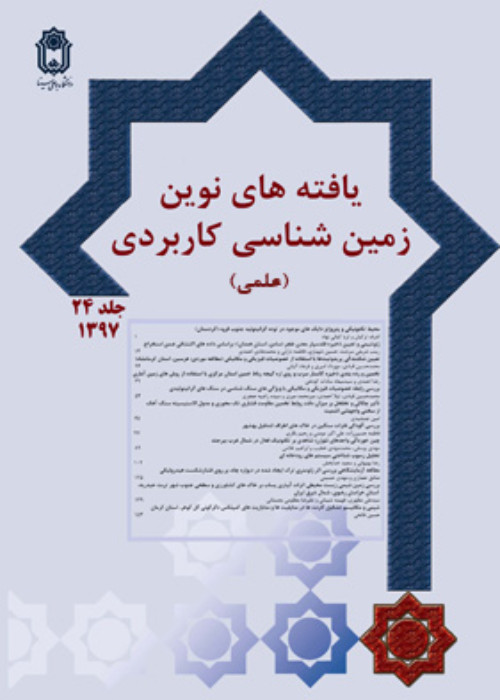Analysis of sediment gravity flows with special view on turbidites
Author(s):
Article Type:
Research/Original Article (دارای رتبه معتبر)
Abstract:
Sediment gravity flows are categorized based on combination of five parameters: sediment concentration, sediment-support mechanism, flow state (laminar or turbulent) and rheology (flow type and its deformation). Except for rheology, all of these parameters change gradationally from one member to another. Therefore, rheological classification of sediment gravity flows should be the most straightforward and the least controversial. These flows can be either Newtonian (i.e., turbidity currents), or non-Newtonian (i.e., debris flows). However, identification of flow rheology by examining the deposits may not be easy. Although we may confidently identify some rocks as turbidites and others as debrites, there are some transitional deposits, here called densites. Densites share both the characteristics of turbidites and debrites. Densites are the deposits of dense flows, which are rheologically stratified flows having a composite rheology of Newtonian fluids and non-Newtonian fluids. The term gravite is proposed for deposits of any kind of sediment gravity flow, irrespective of their depositional environment. Nowadays, turbidity currents only for sediment gravity flows with Newtonian rheology. These types of currents with Newtonian rheology, unlike other currents, should produce a diagnostic distribution grading (due to differential grain settling) from the bottom to the top of the deposits (i.e., Bouma sequence). Turbidite systems are classified based on grain size (mud-rich, mud/sand-rich, sand-rich and gravel-rich), sediment composition (calciturbidite and siliciclastic turbidite) and feeder system) submarine fan with point source, ramp with multiple source and slope apron with linear source). Fine-grained, mud-rich turbidite systems mainly occur in basins with a large fluvial input. The calciturbidites and siliciclastic turbidites in Iran can be named Pabdeh and Sarvak Formations (Zagros Basin), terrigenous part of Amiran Formation and Miocene siliciclastic deposits, respectively.
Keywords:
Language:
Persian
Published:
Journal of New Findings in Applied Geology, Volume:14 Issue: 27, 2020
Pages:
124 to 146
magiran.com/p2143733
دانلود و مطالعه متن این مقاله با یکی از روشهای زیر امکان پذیر است:
اشتراک شخصی
با عضویت و پرداخت آنلاین حق اشتراک یکساله به مبلغ 1,390,000ريال میتوانید 70 عنوان مطلب دانلود کنید!
اشتراک سازمانی
به کتابخانه دانشگاه یا محل کار خود پیشنهاد کنید تا اشتراک سازمانی این پایگاه را برای دسترسی نامحدود همه کاربران به متن مطالب تهیه نمایند!
توجه!
- حق عضویت دریافتی صرف حمایت از نشریات عضو و نگهداری، تکمیل و توسعه مگیران میشود.
- پرداخت حق اشتراک و دانلود مقالات اجازه بازنشر آن در سایر رسانههای چاپی و دیجیتال را به کاربر نمیدهد.
In order to view content subscription is required
Personal subscription
Subscribe magiran.com for 70 € euros via PayPal and download 70 articles during a year.
Organization subscription
Please contact us to subscribe your university or library for unlimited access!


